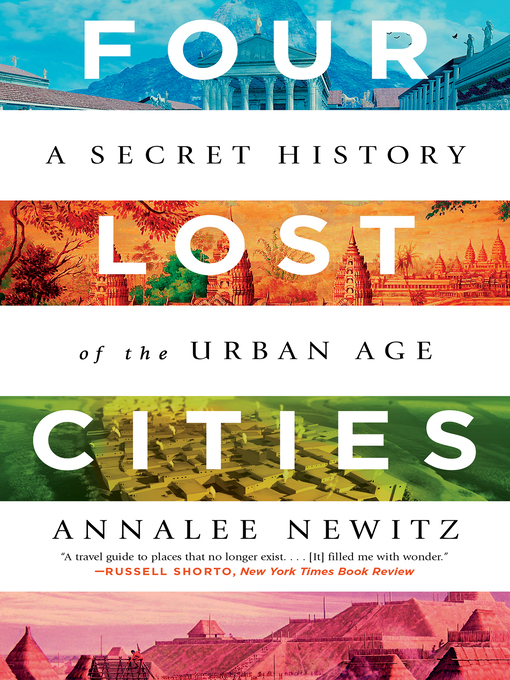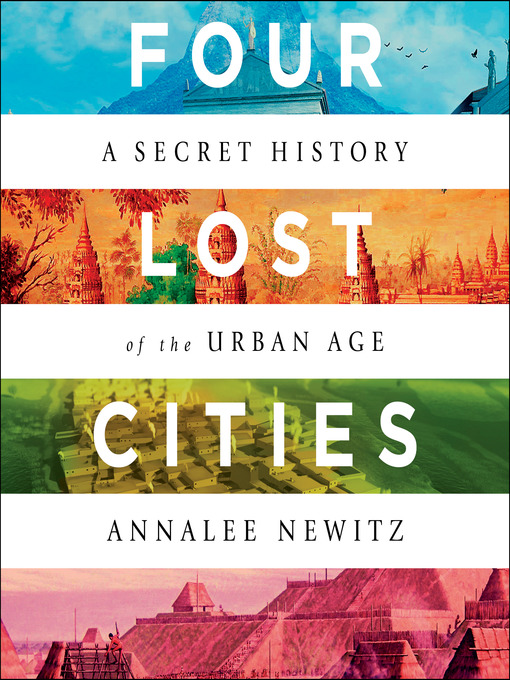Review by Booklist Review
Journalist and author Newitz (The Future of Another Timeline, 2019) makes it clear that the titular phrase "lost cities" is misleadingly mythologizing. The urban spaces glowingly brought to life in these pages weren't lost, but rather declined or were abandoned, becoming stories and odd landmarks. Newitz speaks with many archaeologists and researchers who currently study the areas of Cahokia, Angkor, Pompeii, and Çatalhöyük. Their knowledge and enthusiasm are not only for the grand events of kings abandoning cities or catastrophic volcanic eruptions but also for the day-to-day details that bring the ancient world to life: decorations in the homes of Çatalhöyük, women who rented out shops and ran theater groups in Pompeii, farming and easily overlooked construction in Angkor, and gravel-covered public spaces in Cahokia where people experienced rituals as well as sporting events. But these cities ended. Newitz clearly draws parallels and lessons for the here and now from these once-vast settlements. We are not immune to natural disasters, political upheaval, and labor force abuses. What happens if cities become unlivable for too many? Highly recommended for anyone interested in that question and in what history can tell us about the possibilities for the future.
From Booklist, Copyright (c) American Library Association. Used with permission.
Review by Publisher's Weekly Review
Science journalist Newitz (Scatter, Adapt, and Remember) examines the rise and fall of four ancient cities that "suffered from prolonged periods of political instability coupled with environmental crisis" in this energetic and intriguing account. Spotlighting Çatalhöyük, a Neolithic city found in present-day Turkey; the southern Roman city of Pompeii, which was destroyed in 79 CE by the eruption of Mount Vesuvius; Angkor, the capital of the medieval Khmer Empire in Cambodia; and pre-Columbian Cahokia in what's present-day Illinois, Newitz visits each site and interviews archaeologists to explore how residents of these cities lived and died. Newitz ruminates on the experiences of "Dido," a woman whose skeleton was found in Çatalhöyük, and the prostitutes who lived in the only "purpose-built brothel" in Pompeii; Newitz also recounts elaborate construction projects undertaken by Angkor's kings and human sacrifices offered on large, earthen mounds in Cahokia. According to the author, the dismissive views of Western, Christian historians have obscured the ingenuity and agency of these ancient societies, whose strides in urban planning, contrasted with their social inequalities and political failings, offer lessons for today. Newitz skillfully fuses personal reflections with scientific observations, and offers a welcome tribute to the legacy of human resilience. This richly detailed, progressively minded history is worth exploring. (Feb.)
(c) Copyright PWxyz, LLC. All rights reserved
Review by Library Journal Review
Newitz is an opinion writer for the New York Times and author of novels including Autonomous and The Future of Another Timeline. In this latest work, she takes a time-transgressive look at how centers of urban development rise, thrive, and die. Newitz focuses on four prehistoric urban centers in order to give readers an understanding that, despite differences in time, place, and complexity, urban societies share many similarities. Important urban centers considered are Catalhoyuk, Pompeii, Angkor Wat, and Cahokia. The author poignantly expresses the clear similarities of the "life and death" of these centers of urban development, but also ties them to our understanding of present-day centers of urban population and the complexities of their organization and decay. This book represents a real-time perception of the modern urban age and the lessons learned from prehistory. The author's observations are well-researched, current, and directly applicable to our modern lives. Four Lost Cities represents a contemporary companion to Elaine Morgan's Falling Apart, the Rise and Fall of Urban Civilization (1972). Those interested in prehistoric urban complexity, ancient civilizations, and world history will benefit from this new book. VERDICT An excellent contribution to literature on ancient civilization and complexity.--John Dockall, Austin, TX
(c) Copyright Library Journals LLC, a wholly owned subsidiary of Media Source, Inc. No redistribution permitted.
Review by Kirkus Book Review
An exploration of four far-flung ancient cities, each undone by climate and politics. An alternate title for this book might be A People's History of Urbanism. Newitz is interested in how cities form, grow, and dissipate, and the author trains their focus on how everyday lives were affected by those processes. To do that, they select a quartet of once-mighty metropolises. Catalhoyuk, located in present-day Turkey 9,000 years ago, marked humanity's uneasy shift from farming communities to a dense city until sustained cold and drought unraveled the place. Pompeii was famously obliterated by a volcanic eruption in 79 C.E., but before it then exemplified a diverse society whose folkways survived beyond the city's ruins. Thailand's Angkor is known now for its majestic temples, but in the 13th century, those were just part of an agriculturally complex and sprawling region with a sophisticated infrastructure that was hard to maintain amid climate fluctuation and shaky leadership. Cahokia, located near present-day Saint Louis, was at its height (circa 1050 C.E.) an agricultural epicenter big on collective gatherings, fun and not (human sacrifices were common), until flood and drought likely took a toll. Newitz colors the narrative with accounts of personal visits to each site and interviews with the archaeologists there, many of whom debunk past scholars who looked at sites through a Western lens. (Not every naked female figurine represents a fertility goddess; not every successful society is rigidly hierarchical.) The author also attacks contemporary scholars like Jared Diamond, who argued that ancient civilizations collapse outright; more correctly, Newitz argues, multiple forces challenge and disperse communities. In an era of climate change, it's a hearteningly un-dystopian message but still a challenge to leaders to focus on "resilient infrastructure…public plazas, domestic spaces for everyone, social mobility, and leaders who treat the city's workers with dignity." A revealing look at the ancient past that speaks thoughtfully to the global-warming present. Copyright (c) Kirkus Reviews, used with permission.
Copyright (c) Kirkus Reviews, used with permission.


